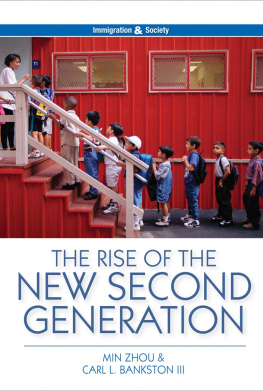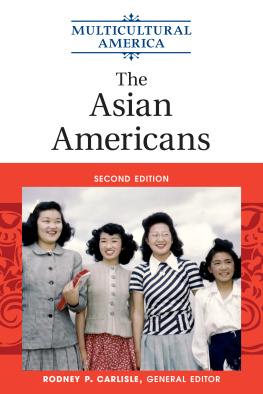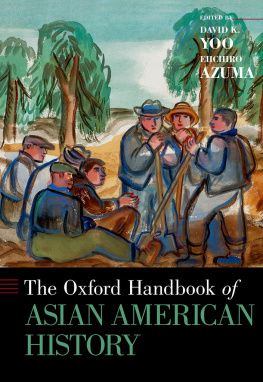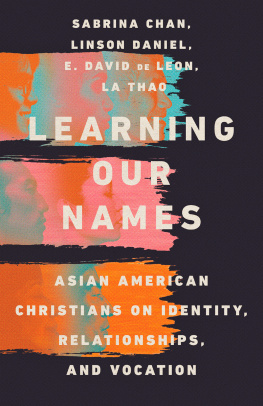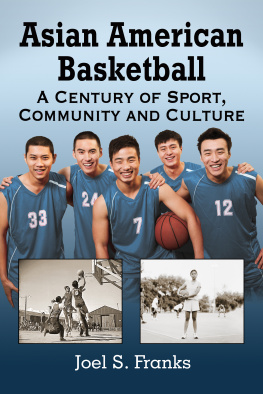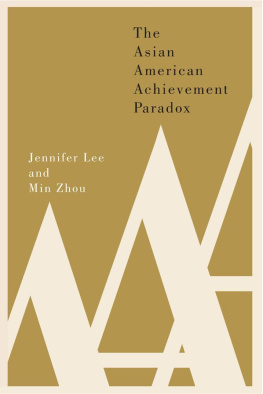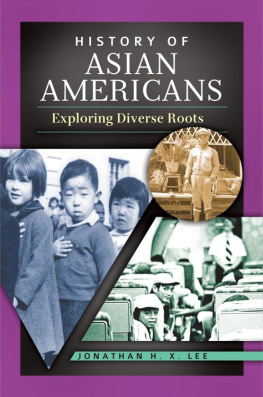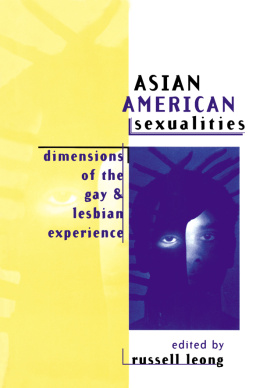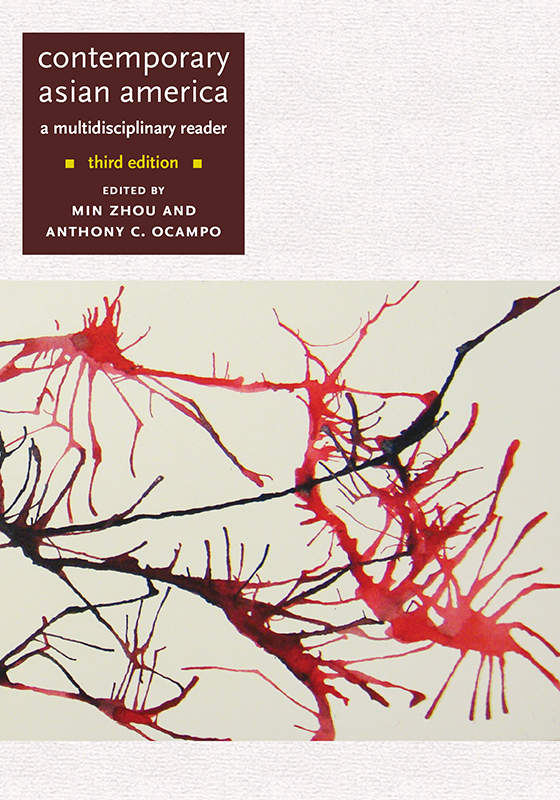
CONTEMPORARY ASIAN AMERICA
Contemporary Asian America
A Multidisciplinary Reader
THIRD EDITION
Edited by Min Zhou and Anthony C. Ocampo

NEW YORK UNIVERSITY PRESS
New York and London
NEW YORK UNIVERSITY PRESS
New York and London
www.nyupress.org
2016 by New York University
All rights reserved
References to Internet websites (URLs) were accurate at the time of writing. Neither the author nor New York University Press is responsible for URLs that may have expired or changed since the manuscript was prepared.
Library of Congress Cataloging-in-Publication Data
Names: Zhou, Min, 1956 editor. | Ocampo, Anthony Christian, 1981 editor.
Title: Contemporary Asian America : a multidisciplinary reader / edited by Min Zhou and Anthony C. Ocampo.
Description: Third edition. | New York : New York University Press, 2016. | Includes bibliographical references and index.
Identifiers: LCCN 2015043568| ISBN 9781479829231 (cl : alk. paper) | ISBN 9781479826223 (pb : alk. paper)
Subjects: LCSH: Asian Americans. | Asian AmericansStudy and teaching.
Classification: LCC EO C 2016 | DDC 973/.0495dc23
LC record available at http://lccn.loc.gov/2015043568
e-ISBN: 978-1-4798-4999-4
From Min Zhou: For Philip Jia Guo and Lisa Phuong Mai, the children of Asian immigrants
From Anthony C. Ocampo: For my parents Myrtle and Chito Ocampo, immigrants from the Philippines
CONTENTS
Min Zhou, Anthony C. Ocampo, and J. V. Gatewood
Karen Umemoto
Glenn Omatsu
Min Zhou, Anthony C. Ocampo, and J. V. Gatewood
Carl L. Bankston III and Danielle Antoinette Hidalgo
Rhacel Salazar Parreas
Yang Sao Xiong
Wei Li, Emily Skop, and Wan Yu
Pawan Dhingra
Yen Le Espiritu
Susan Eckstein and Thanh-Nghi Nguyen
Kevin L. Nadal and Melissa J. H. Corpus
C. Winter Han
Janine Young Kim
Anthony C. Ocampo
Min Zhou
Jennifer Lee and Frank D. Bean
Kim Park Nelson
Lisa Park
Sunaina Maira
Derald Wing Sue, Jennifer Bucceri, Annie I. Lin, Kevin L. Nadal, and Gina C. Torino
Maxwell Leung
Lisa Sun-Hee Park
OiYan Poon and Ester Sihite
Lisa Lowe
Nadia Y. Kim
Jennifer Ng, Yoon Pak, and Xavier Hernandez
S. Karthick Ramakrishnan, Janelle Wong, Taeku Lee, and Jane Junn
TABLES
Asian American Population, 19802000 (Thousands)
Top Ten Metro Areas with Largest Asian American Population, 2010
Largest Asian American Population Growth, by Region and State, 20002010
Socioeconomic and Family Characteristics of the US Population and of Major Southeast Asian Groups in the United States, 20102012
Poverty Rate of Select Racial/Ethnic Categories, 19891999
Population of Hmong Alone by Select US States, 19902010
Average Household and Family Size by US General and US Hmong Populations
Proportion in Poverty by US and Hmong Family Type, 20052010
Asian Americans in the United States and Top Ten States, 19902010
Metropolitan Areas with Largest Asian American Populations, 2010
Metropolitan Areas with Asian American Population at Least One Percent of National Total
Top Ten Countries of Origin of Foreign-Born Hairdresser and Grooming Service Workers in the United States in 2000
Percentage of Nail Technicians in the United States of Diverse Ethnicities, 19992009
Vietnamese Manicurists by Year of Arrival (%), in 2007
Domains and Themes
Everyday Words in English, Spanish, and Tagalog
Panethnic Identification of Respondents (N = 50)
Panethnic Identification by Ethnicity, Second-Generation Asians (N = 1,617)
Panethnic Identification by Ethnicity, Second-Generation Asians (N = 921)
Rates of Exogamy among Marriages Containing at Least One Member of the Racial/Ethnic Group
Multiracial Identification by Census Racial Categories
Most and Least Multiracial States
Asian American Vote Choice in the 2008 Primaries, among Registered Voters
Asian American Vote Choice in the 2008 General Election, among Registered Voters, by Month of Interview
Asian American Vote Choice in the 2008 General Election, among Registered Voters, by Primary Vote Choice
Group Distance and the Black-Latino Divide among Asian American Registered Voters
Asian American Vote Choice in the 2008 General Election, among Registered Voters, by Ethnicity
Logit Regressions of Vote Choice in the 2008 Primary and General Election
Ordered Logit Regression of Intended Vote Choice in the 2008 General Election
FIGURES
Percentage Distribution of Asian American Population, 19002010
Asian American Population: Percentage Foreign-Born, 19002010
Major Southeast Asian Populations in the United States, 19202013
Detailed Asian Groups by Foreign-Born, Second Generation, and Third and Later Generations
Chinatown in San Francisco
Number of Nail Salons in the United States, 19912008
Nail and Beauty Salon Share of Total Revenue in the Beauty Sector, 19992007
There was a time, not too long ago, when race in America was synonymous with the black-white dichotomy. But since the United States reformed its immigration policy and reopened its borders to newcomers, immigrants and their children have transformed the racial landscape of this country. In the past decade or so alone, the immigrant population has grown tremendously, from thirty million at the turn of the twenty-first century to over forty million today. The Pew Research Centers comprehensive study of Asian Americans, titled The Rise of Asian Americans, surprised many by pointing out that Asian Americans, not Latinos, constituted the fastest growing racial group, and much of the growth is due to international migration. More than a third (36 percent) of the new immigrants who came to this country in 2010 were of Asian American or Pacific Islander descent, compared to 31 percent of Latino origin.
Over the past half century, Asian Americans grew from fewer than one million (or 0.6 percent of the total US population) in 1960 to more than nineteen million (or 6 percent of the US population) in 2013. Asian Americans have now complicated Americans notions of race. By virtue of their presence all over the country, it is now impossible for nineteen million people of Asian origins to remain unseen.
As the contributors of the following chapters demonstrate, Asian Americans have carved out niches and made themselves visible within many arenas of American lifeschools and colleges, community-based organizations, suburbs and ethnoburbs, neighborhoods and gayborhoods, political movements, and even professional sports leagues. Asian American immigrants and their children work in every echelon of the mainstream and ethnic labor marketsprofessional occupations, service sectors, hospitality industries, and health care and medicineand have achieved measureable positive socioeconomic outcomes. Unlike the European and Asian immigrants of yesteryear, they excel in the education arena and fare well in American society on economic terms. They also have more resources and technology to intimately and economically tether themselves to the home countries they left behind. The emerging popularity of social media has helped democratize American pop culture, and Asian Americans have used the Internet to raise social consciousness (e.g., 18millionrising.org,
Next page

